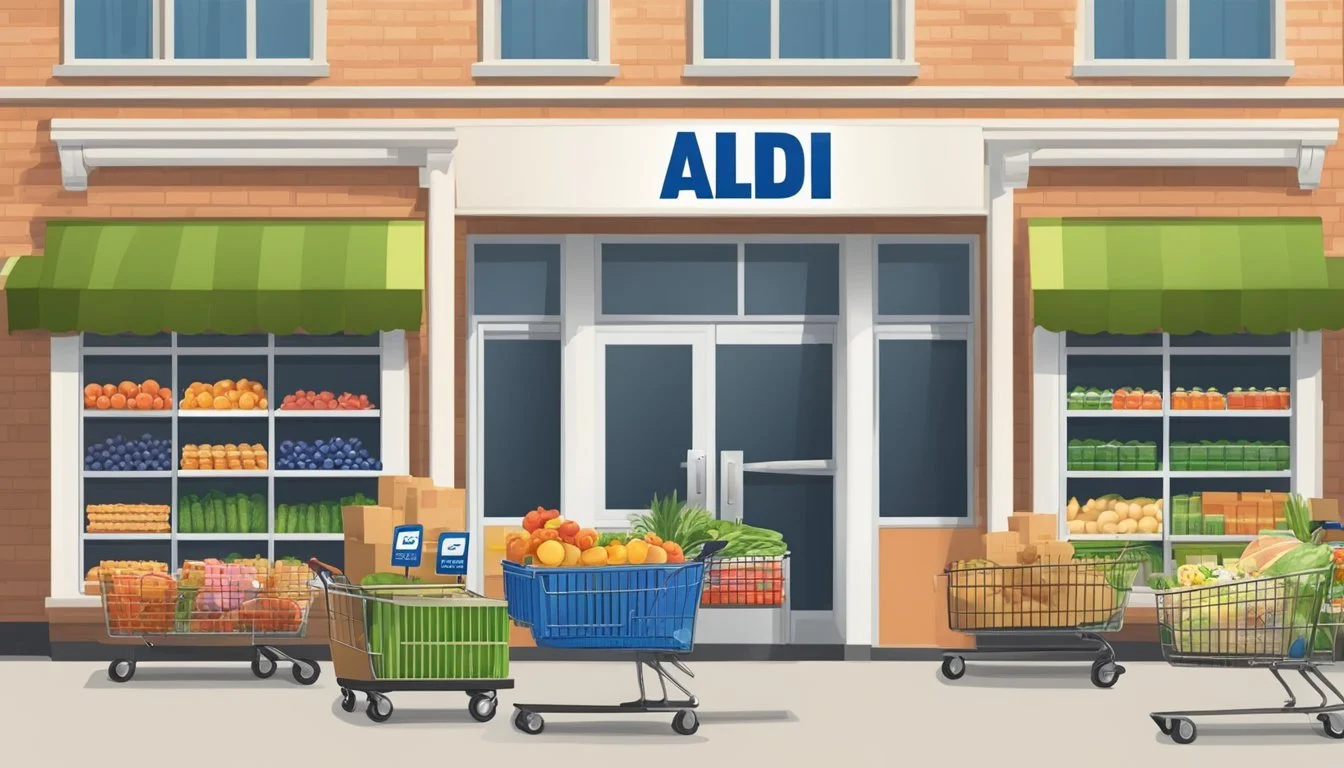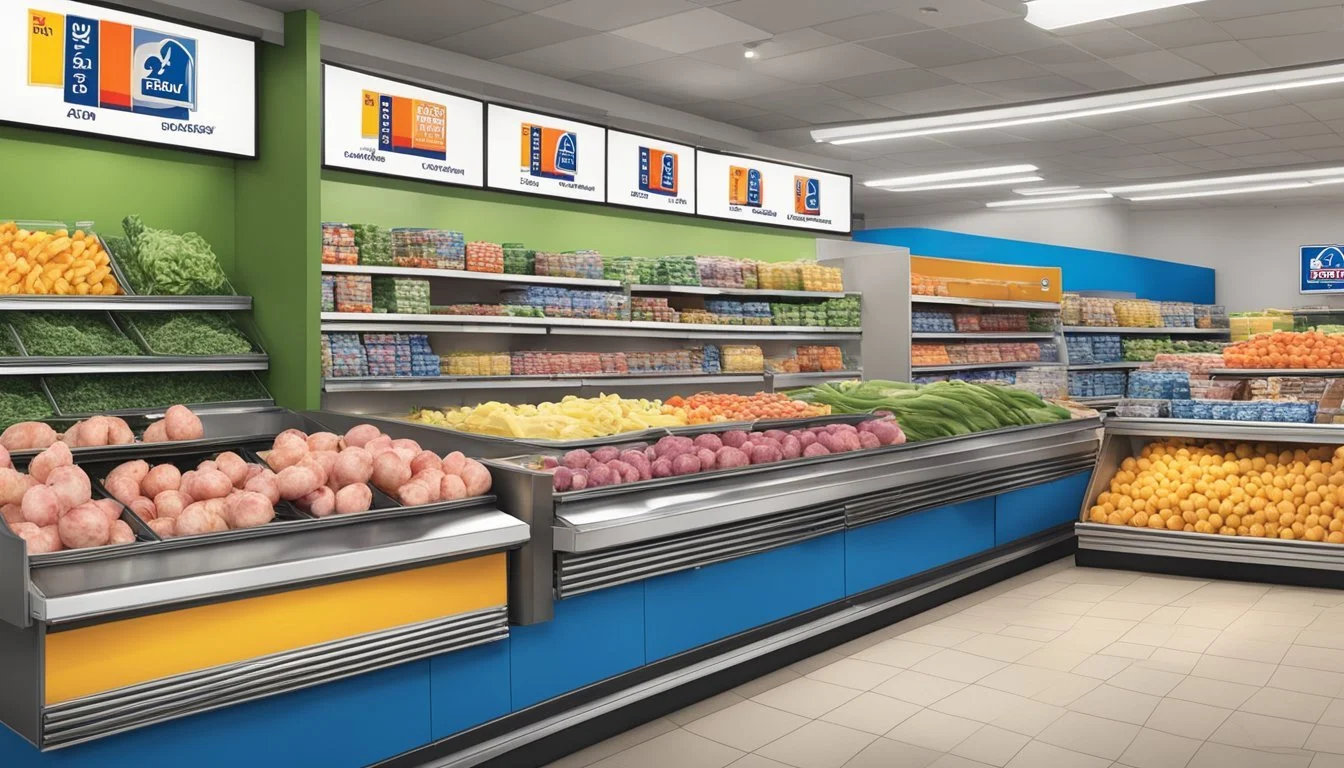Is Aldi Cheaper Than Piggly Wiggly?
Comparing Grocery Store Prices
Part of Our Grocery Store Guide with Details on Aldi Prices and Piggly Wiggly Prices
When it comes to grocery shopping, consumers are always on the hunt for the best deals, particularly regarding staples and everyday necessities. Among the various grocery store chains, Aldi and Piggly Wiggly have emerged as popular destinations. Aldi, known for its cost-effective approach, keeps prices low by offering a wide range of private label products, which often allows them to undercut competitors. Their efficient store model emphasizes simplicity and cost-saving strategies like a smaller store footprint and a focus on staple items.
Piggly Wiggly, on the other hand, maintains a strong presence in the Southern and Midwestern United States and has a loyal customer base. The stores cater to local tastes and preferences, offering both national brands and private labels. Prices at Piggly Wiggly can be higher, especially in tourist areas where options are limited. However, the chain has been known to offer competitive pricing in certain regions, which might provide a closer match to Aldi's low-cost offerings.
The question of whether Aldi is cheaper than Piggly Wiggly does not have a one-size-fits-all answer; it largely depends on the specific region, the availability of the stores, and the types of products customers are looking to purchase. While Aldi consistently works to deliver products at the minimum price point, Piggly Wiggly's pricing can vary, possibly presenting more economical options for certain items or in certain locations.
Grocery Pricing Comparison
In a comparison of grocery pricing between Aldi and Piggly Wiggly, consumers are often looking for the best value on everyday items like produce, meat, dairy, and pantry staples.
General Price Trends
Aldi has established a reputation for offering low prices due to its cost-saving business model that includes a high percentage of private labels. In contrast, Piggly Wiggly also provides competitive pricing, often on par with other major retailers, offering consumers savings on a range of groceries.
Aldi: Known for its economical pricing across the board.
Piggly Wiggly: Provides low prices that mainly compete with those of Walmart and similar stores.
Specific Cost Analysis
When examining specific items such as butter, milk, eggs, chicken, and ground beef, Aldi typically presents lower prices than Piggly Wiggly. This is due to Aldi's business strategy of minimizing overhead costs and maximizing efficiency.
Product Price Comparison:
Item Aldi Price Piggly Wiggly Price Butter (1 lb) $2.29 $2.59 Milk (1 gal) $2.19 $2.39 Eggs (1 doz) $1.15 $1.39 Chicken (1 lb) $1.89 $1.99 Ground Beef (1 lb) $3.49 $3.79
Discounts and Deals
Both grocery stores offer discounts and deals that can impact the overall savings for consumers. Aldi is known to periodically offer "Aldi Finds," which are weekly special buys that could lead to significant savings. Meanwhile, Piggly Wiggly frequently has sales and accepts coupons, allowing shoppers to save money on groceries.
Aldi: Regularly offers discounts through its "Aldi Finds."
Piggly Wiggly: Engages customers with sale prices and the use of coupons.
Product Assortment and Quality
In evaluating the assortment and quality of products offered at Aldi in comparison with Piggly Wiggly, consumers often consider the balance between brand variety, freshness of produce and meats, and the range of specialty and dietary options available.
Brand Comparison
Aldi is renowned for its private label items which are tested rigorously to meet or surpass the quality of national brands. In contrast, Piggly Wiggly offers a standard selection of both name-brand and store brand products, including their "Piggly Wiggly" brand items which compete with Great Value from Walmart and the Kroger brand from Kroger. Aldi's streamlined selection, which often features their Simply Nature line, is intentionally limited to maintain quality and keep costs low.
Freshness and Selection
For fresh produce, meats,** vegetables**, and fruits, Aldi's model emphasizes stocking fewer items but ensuring they are fresh and high-quality. This means their selection, while smaller, often has high turnover which typically leads to fresher options. Piggly Wiggly, having a larger variety, carries an extensive range of produce, including berries and other perishables, but the focus may split between variety and maintaining freshness.
Specialty and Dietary Options
Aldi has made a significant push to accommodate various diets by offering affordable gluten-free, organic, and vegan options within their product lines. Their Simply Nature range, for example, includes several organic products that are priced competitively, making it easier for customers to access healthier choices. Piggly Wiggly also caters to specialized dietary needs, although the range of such products may vary by location.
Both stores show commitment to quality, but Aldi's approach to limit its product range is a key strategic move to control cost without compromising on the quality of the items offered.
Shopping Experience
When comparing the shopping experience between Aldi and Piggly Wiggly, customers will notice differences in store layout, design, and customer service, which are essential aspects that can influence their overall grocery shopping routine.
Store Layout and Design
Aldi is recognized for its straightforward store layout, which allows for efficient navigation. One can expect wide aisles and a no-frills design focused on simplicity, making the shopping list journey quick and relatively stress-free. The supermarket's compact size means less time is spent walking from one section to another, and products are often displayed in their shipping boxes to reduce the time workers need to spend stocking shelves.
Piggly Wiggly offers a more traditional supermarket experience with a wider selection of goods and a layout that encourages browsing. Shoppers may find various departments like deli, bakery, and butcher, which are often more extensive than those in Aldi. The larger store size could increase the time spent locating items, possibly leading to a lengthier shopping trip compared to Aldi.
Customer Service
At Aldi, customer service is efficient, with a focus on quickly moving customers through the checkout process. Their model often leads to fewer workers on the floor, which might limit immediate customer assistance. However, this streamlined approach contributes to Aldi's capability to keep prices low.
Piggly Wiggly puts more emphasis on a community-focused customer service approach. They often have more staff available in-store, which can be helpful for shoppers who need assistance or have inquiries about products. This can enhance one's shopping experience but may also reflect in the pricing of goods compared to Aldi.
Cost-Effective Shopping Strategies
When it comes to stretching a grocery budget, savvy shoppers at Aldi and Piggly Wiggly can employ a variety of strategies to ensure they get the most for their money. From making informed budgeting decisions to utilizing technology, the approach to saving money on groceries is multifaceted.
Smart Budgeting
A fundamental practice for any frugal shopper is to establish a clear budget. Shoppers should review their financial situation and decide on a grocery budget that aligns with their overall expenses. Then, with their budget in mind, they can prioritize items that offer the best value. This often means preparing a grocery list before visiting stores like Aldi or Piggly Wiggly to avoid impulse buys that can inflate the total shopping bill.
Review finances monthly.
Determine a grocery budget.
Create a shopping list to stick to the budget.
Leveraging Store Brands
One of the most effective means to save money on groceries is to opt for store brands or private label products. Aldi, for instance, carries a predominantly private label inventory which costs less compared to national brands, allowing shoppers to save without compromising quality.
Aldi: Over 90% store brands offering significant savings.
Piggly Wiggly: Offers a mix of national and private label brands.
Brand Type Expected Savings Store Brand High National Brand Lower
Maximizing Savings with Technology
In the digital age, frugal shoppers can maximize savings through the use of budgeting apps and digital coupons. Aldi and Piggly Wiggly customers can check for store-specific apps or general coupon apps that offer discounts and deals on various products. Additionally, traditional methods like scanning the newspaper for coupons should not be overlooked, as they often contain exclusive offers not found online.
Use store-specific or general coupon apps for real-time deals.
Check newspapers and store flyers for additional savings.
Savings Method Tool Digital Apps, Online Deals Traditional Newspapers, Flyers
Additional Costs and Considerations
When evaluating the cost-effectiveness of shopping at Aldi compared to Piggly Wiggly, consumers should take into account membership fees and bag policies, which can influence the overall shopping expenditure.
Membership and Fees
Aldi does not require a membership to shop at its stores, which can lead to direct cost savings compared to membership-based retailers like Costco. Shoppers at Aldi can freely access the store's low prices without any additional fee. In contrast, Piggly Wiggly, a conventional grocery store, does not charge a membership either, putting it on equal footing with Aldi in this aspect.
Bag Policies and Charges
Aldi is known for its practice of charging for bags, encouraging customers to bring their own reusable ones. This can add a small cost to each shopping trip if customers do not come prepared with bags. Bag prices at Aldi are as follows:
Plastic bags: $0.10 each
Paper bags: $0.07 each
Reusable bags: Varies in price
Piggly Wiggly also offers bags, but policies and charges may vary by location. It is not uncommon for grocery stores to charge for bags in an effort to promote environmental responsibility. Customers should check their local store's policy to avoid unexpected charges.
Chain-Specific Services and Policies
When comparing Aldi and Piggly Wiggly, it's important to consider not just product pricing, but also the distinct services and policies that each grocery store chain offers. These factors can have a significant impact on the overall shopping experience.
Return Policies
Aldi: Aldi is known for its generous return policy, famously known as the "Twice as Nice Guarantee." If a customer is not satisfied with a product, they can return it and receive both a refund and a replacement. This policy underscores Aldi's confidence in their own-brand products.
Piggly Wiggly: Piggly Wiggly stores are independently owned, therefore return policies can vary. However, most stores typically offer refunds or exchanges for products that fall short of customer expectations. Customers are advised to check with their local Piggly Wiggly for specific return policy details.
Delivery and Pickup Options
Aldi: Aldi partners with third-party services, such as Instacart, for delivery and curbside pickup options. The availability of these services can vary by location but has become increasingly prevalent, offering convenience to shoppers favoring online grocery shopping.
Delivery: Often offered through Instacart, depending on zip code.
Curbside Pickup: Available in select locations, with fees applicable for the service.
Piggly Wiggly: Piggly Wiggly's delivery and pickup services are also dependent on the specific franchise. Some locations offer their own delivery services, while others might partner with third parties.
Delivery: Offered by some stores directly or through third-party platforms.
Curbside Pickup: Available at certain locations, with varying policies and costs.
Both Aldi and Piggly Wiggly strive to make shopping convenient, though the exact offerings may differ, reflecting each chain's approach to meeting customer needs.
Conclusion
When comparing Aldi and Piggly Wiggly, Aldi consistently offers a more budget-friendly shopping experience. Aldi's prices on a range of grocery items have been found to remain low despite market fluctuations, asserting its position as an economical choice for consumers. Piggly Wiggly, while providing a localized shopping environment, does not consistently match Aldi's low price point.
Savings are significant at Aldi, with a reported increase in their competitive pricing margin. Their prices on many staple items are lower than Piggly Wiggly's, which can translate to appreciable savings over time for budget-conscious shoppers. It is not just about the lower costs but also the shopping experience Aldi offers; the store's layout is designed for efficiency, which may appeal to those who prioritize quick and cost-effective shopping trips.
Comparing Costs:
Item Aldi Price Piggly Wiggly Price Bread $1.19 $1.49 Milk (1 gallon) $2.95 $3.29 Chicken (per lb) $1.49 $1.89
*Prices are representative and subject to change.
In summary, for those looking to stretch their budget further without compromising on the quality of groceries, Aldi appears to be the stronger contender over Piggly Wiggly. Shoppers have demonstrated a preference for Aldi's combination of value and efficiency in their shopping experience. However, it is important to note that local store promotions and specific product preferences might influence individual experiences.






